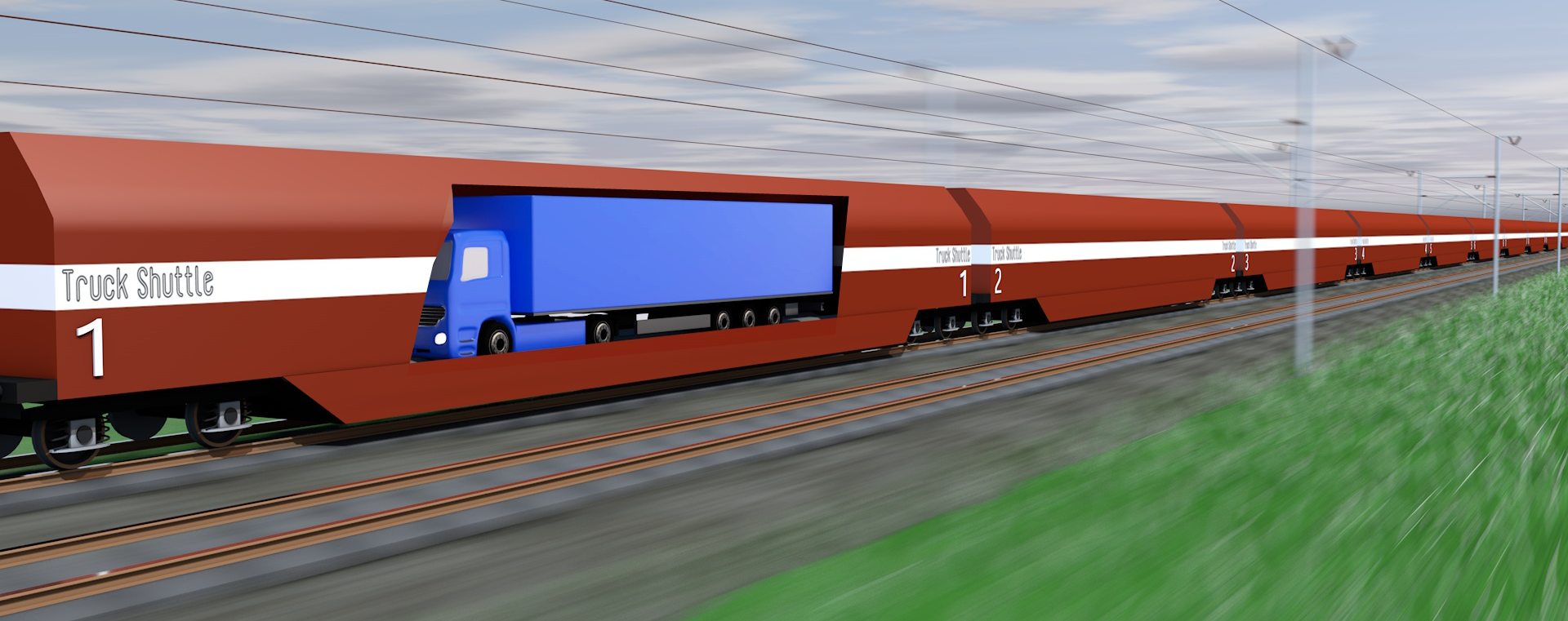What is the Truck Shuttle concept ?
It is a 'roll on - roll off' concept tailored to the individual wagon for the simple transfer of large freight shares, in the form of complete trucks, from road to rail. It is therefore an improved form of use of the accompanied combined transport (bKV) known in the world of railroaders as it is already successfully used today for crossing the Alps.
In contrast to this and other forms of CT, such as craning or other loading of semitrailers, transport is not exclusively 'end-to-end' but can be carried out in a defined network in cyclic operation. Thus, at each loading station and at each wagon of the truck shuttle train, users can get on, off and change trains. A stop of less than 15 minutes is sufficient for this.
The onward journey of the truck then takes place immediately after leaving the truck shuttle without time-consuming organization and provision of a new tractor and a new driver by the forwarder. As a rule, the driver of the transported truck is rested and can continue the journey unencumbered by driving time. This makes it possible to deliver the goods faster and safer than using only the road.
The concept is thus characterized by a high degree of flexibility and consideration of the main interests of all stakeholders. It thus represents the ideal link between road and rail transport.
The aim of the truck shuttle operation is also to limit the regional stresses caused by truck traffic there to those trucks that actually have to do business in the area. The others, who only want to pass through the region anyway, stay on the train until they reach their destination. This is especially true for metropolitan areas, which are usually already congested with normal traffic anyway.
You can find the most important facts in our Fact sheet truck shuttle concept
You can find the advantages of TruckShuttle in the Side effects
Here is one Comparison matrix of the different transport systems

